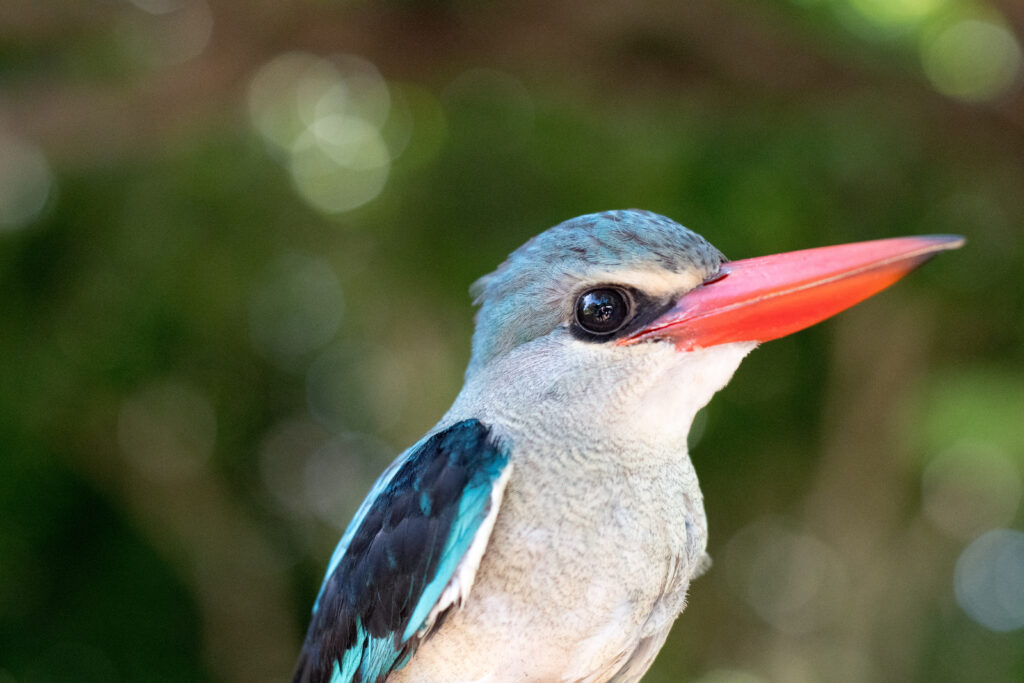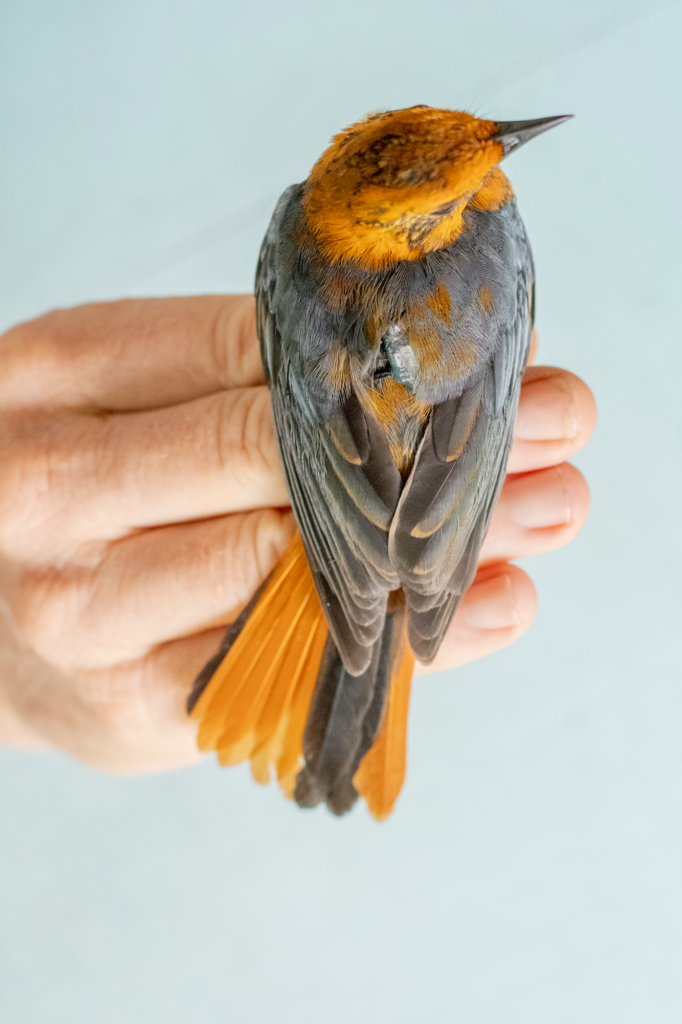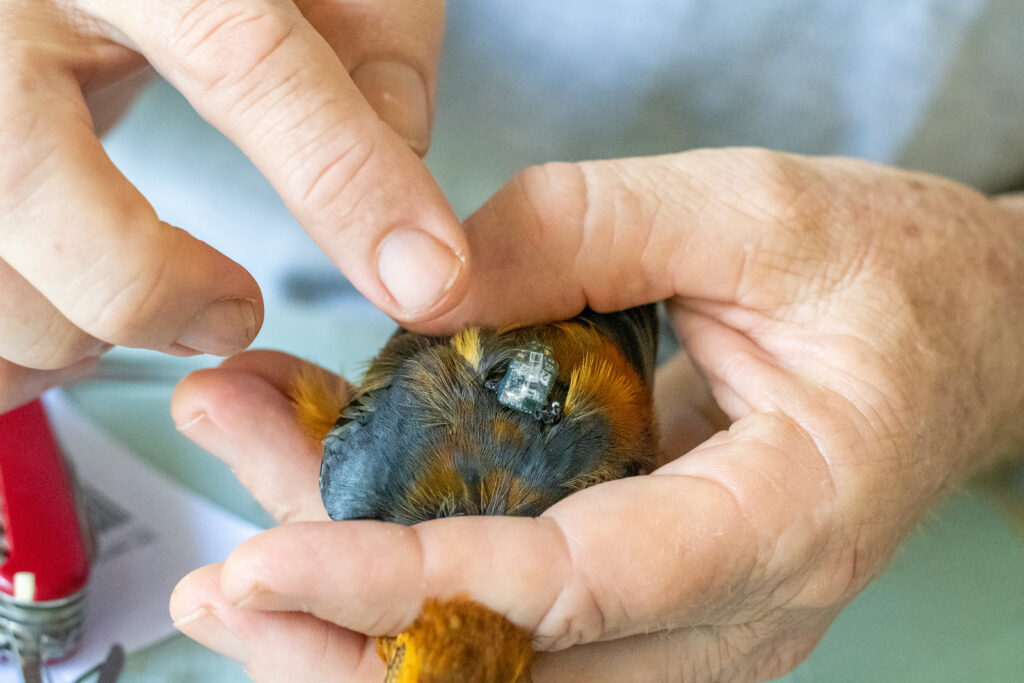Uncovering the unknown migration patterns of two Afro-tropical birds
Bird migration is a fascinating and mysterious phenomenon, which, due to its very nature, is hard to study.
However great progress has been made in the past 50 years in our understanding of global bird migration strategies, thanks to data from bird ringing, ground observations, and more recently, new technologies such as geolocators, GPS trackers and weather radars.
Yet while we have learned much on the migration patterns of Palearctic migrants (birds breeding in Eurasia and wintering in Africa), little is known still about intra-African migration. Indeed, we estimate that close to 600 bird species migrate within the African continent¹, but their route, patterns and strategies are largely unknown.
Close to 600 bird species migrate within the African continent, but their route, patterns and strategies are largely unknown.

Mangrove Kingfisher – Beyond the need of different habitats between breeding and wintering (June-Oct in Kenya), little is known about the migration strategy and route of this species.
Why does this matter?
Understanding these migration patterns is essential for conservation purposes. The growth in population and resulting habitat fragmentation are strongly threatening migratory birds, as it transforms key migratory stop-over sites as well as wintering grounds. This change in landscape is apparent in Watamu coastal area, where the expansion of urban areas and hotels has led to decline in mangrove forest and coastal vegetation².
What’s more, while Palearctic migration closely follows Northern hemisphere seasons, migration patterns within Africa are more complex. Afro-tropical migrants are highly sensitive to rainfall for their migration, which has become increasingly unpredictable due to climate change.
Mapping migration routes is an important first step to be able to identify and protect key habitats and stopover sites used by birds.
Mapping migration routes is an important first step to be able to identify and protect key habitats and stopover sites used by birds.
Our Terrestrial Science Team, manned by Colin, Kirao and Raph, has recently started an exciting new 4-year study to uncover the migration patterns of two Afro-tropical migrants: the Red-capped Robin-chat and the Mangrove Kingfisher. These are both species that we find on the Coast of Kenya from April-May to October-November. Outside these months, we don’t know where they go.

Red-capped Robin-chat – the migratory patterns of this species have been difficult to understand.
How do we plan on getting this information?
We will equip birds with geolocators, a lightweight tracking device used to map migration routes and identify important staging areas.

Geolocators are small tracking devices that use sunlight to determine the bird’s location.
How do geolocators work? « Just as scientists can determine the sunrise and sunset time based on location, they can also use sunrise and sunset times to predict a location. Light-level geolocators are tracking devices that use daylight to estimate location. They include a light sensor, an internal clock, a battery and a computer that stores a measurement of the amount of light that the sensor is exposed to. Recording light levels does not require a lot of electricity, so batteries for these devices can be very small and last over a year. Because of this, these devices are incredibly light (just 0.3 grams) and can be placed on any bird that weighs more than 7 grams ».³

Colin Jackson equipping our very first Red-capped Robin-chat with a geolocator on 21 May 2020!
The information is stored in the geolocator, but can only be retrieved upon recapturing the same bird. It is therefore important to equip birds that have a high likelihood of returning to the same site the following year. We analysed our 20-year ringing database to determine which birds to equip and when (methodology explained in simple terms here). The Red-capped Robin-chats will be caught during our weekly ringing sessions at Mwamba, while Mangrove Kingfishers will be caught on their territory using a spring trap designed specifically for perching birds.
From 2020 to 2022, we will equip 10 Mangrove Kingfishers and 15 Red-capped Robin-chats each year. From 2021 to 2023, we’ll be recapturing birds to retrieve information. More updates will follow as the projects unfolds!
This project is carried out thanks to the generous support of the Swiss Ornithological Institute.
Want to read more?
Using geolocators to unravel intra-African migrant strategies – Research proposal
Using ringing data to inform a geolocator study: when and which birds to equip? – We explain in simple terms how we used A Rocha Kenya’s ringing database to determine when and which birds to equip with geolocators.
References
- Turpie, J. K. (1996) Superpilots Bird migration in Africa. Africa Birds and Birding, pages 61 –67.
- Alemayehu, F. (2016) Land Use and Land Cover Change in the Coastal Area of Watamu Mida Creek, Kenya, Open Journal of Forestry 06:04
- Smithsonian National Zoo and Conservation Biology Institute
